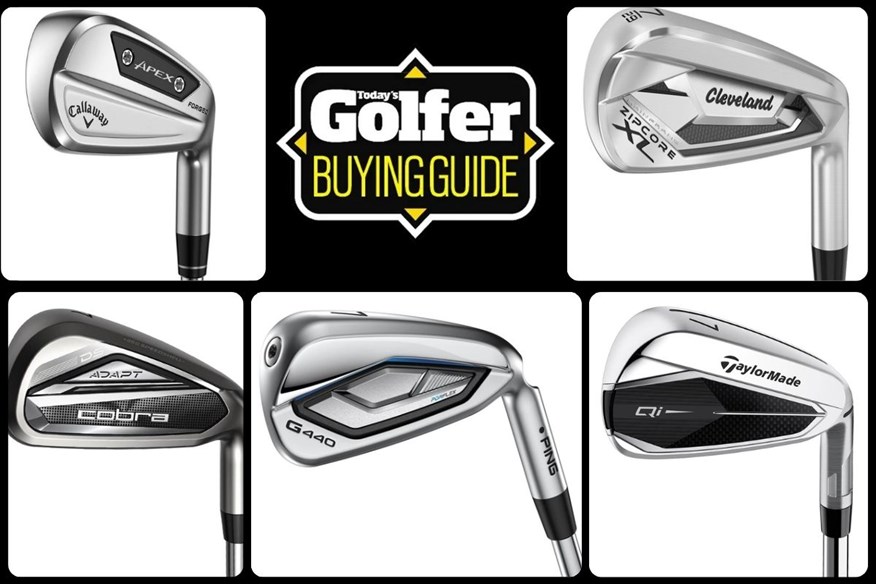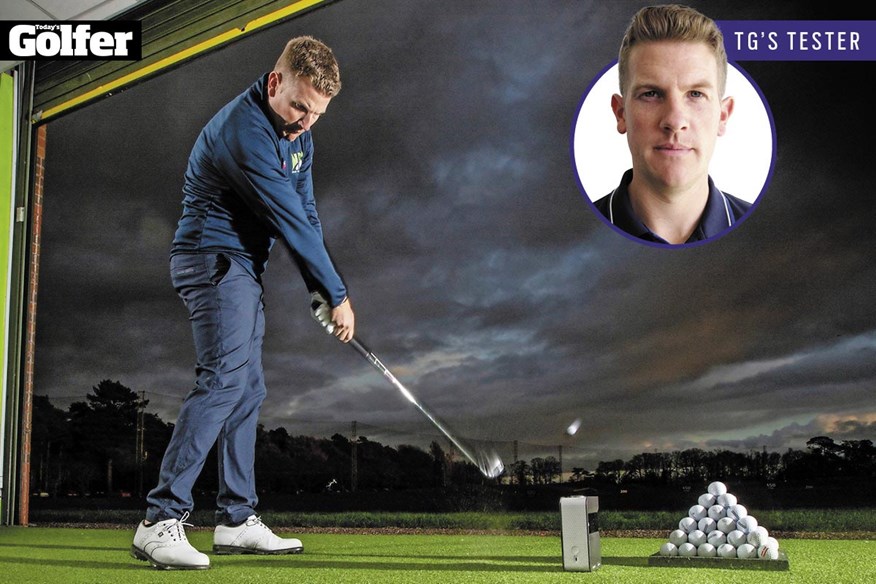What are the Best Game-Improvement Irons in 2025 and are they right for your game?
Last updated:
Find out how we get the most accurate results to give you the best recommendations for your next iron set.
Game-improver irons offer help where we need it but also complement our natural games too. Let’s break down our best game-improver irons of 2025 and how they could work for you.
Just so you know, we may receive a commission or other compensation from the links on this website – read why you should trust us.
The best game-improver irons for 2025 hasn’t been an easy list to narrow down. With outstanding irons across the board, manufacturers are squeezing every last ounce of performance from their latest models.
The demands put on a game-improver iron don’t make identifying the best simple. If you’re buying a blade-style or players iron, you’re only really after one thing – consistency. It’s a similar story with beginner clubs, where getting airborne is the only real goal.
When looking at game-improver irons though, we’re trying to find a design that works for everything. We’re looking for our distance to be maximized within our speed. We want consistency from the product so we see predictable ball flights on the course. We need something that can help us in the now but also stay with us as we develop our golf game.
Looking at head design is a great starting point. Wide-sole irons are shaped like that to give more space for bringing weight lower in the head. As we bring weight lower, we also move the Center of Gravity down with it, which helps out with launching the ball higher as well as retaining more ball speed from thinner shots.
Narrower soles could help us with getting the club in behind the ball, especially if we’re shallow and don’t take many deep divots.
Different heads will use different materials in construction, affecting feedback and feel, as well as performance aspects like distance and straightness. Ultimately, as much as technology will help with these irons, the only real way to tell what will work best for you is to go and be fitted for them.
With that in mind, this is how we test irons to evaluate what we feel are the best performers of the year.
Best Game Improvement Irons 2025
After testing was complete, these are our selections for the best game-improver irons of 2025.
Best Game Improver Iron 2025


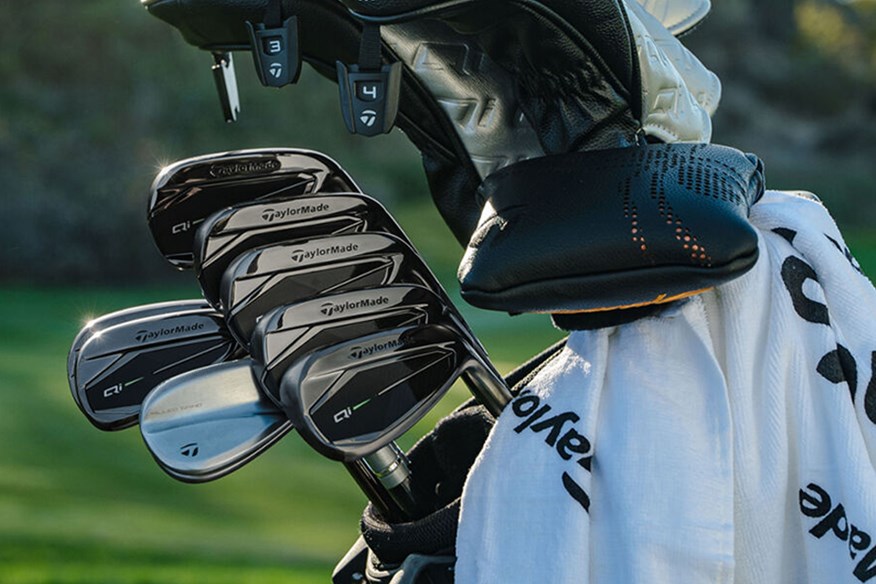
The winner of the Game Improver category across all the stats we look at, the TaylorMade Qi iron, despite being in its second year, proves it hasn’t lost any of its great quality.
TaylorMade have offered an update to the Qi finish options, in case you want to blend them in with a new Qi35 carbonwood set up, by giving you the choice between the original chrome and black, or you can pick the new gunmetal look for a smoky metal finish.
A tight, squared-off head shape looks good in any bag as well as at address, and the Cap Back and Speed Pocket designs help to provide impressive ball speed and consistency across the face for the player who needs help on off-centre strikes.
What our tester says:
TaylorMade have put together a good option here, considering it’s the only Game Improver iron they offer. It needs to work for higher handicaps as well as the mid-handicap guys who are on the border of the Players Distance models transition, and it should work for both. Really great iron.
Data:
Loft 28º | Clubhead Speed 94.6 MPH | Ball Speed 129.1 MPH | Carry 187 Yards | Spin 5,745 RPM | Launch 15.3º | Height 33.6 Yards | Descent Angle 47.4º | L-R Dispersion 4.7 Yards
Check out our TaylorMade Qi iron review here
Pros
- Easy to blend with other iron sets
- Works for Mid to High Handicaps
Cons
- Better looking Game Improvement irons out there
| Set Options | 4-PW, AW |
| Stock Shaft | KBS Max MT / UST Mamiya Recoil DART |
| Stock Grip | Lamkin Crossline |
| Left Handed | Yes |
Second Best Game Improver Iron & Best Game Improver Iron for Max Height 2025


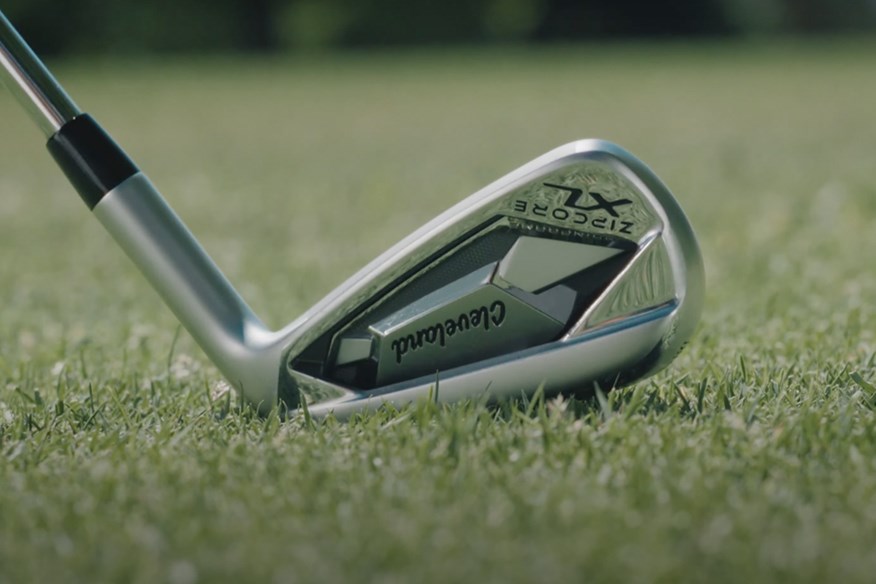
Compared to its sibling company’s irons, the Srixon ZXi family, Cleveland often gets the short end of the stick with golfers today. Once held as one of the most interesting and innovative brands in the game, it generally gets pushed in the direction of the highest handicap or slowest swing speed players for the general public’s opinion (with the exception of the excellent wedge family, like the current line RTZ).
The Zipcore XL is a fantastic move for Srixon/Cleveland in reminding the public they do still know how to make a solid iron set, one that has the recognisable DNA of the Hi-bore history in how easy it is to hit, combined with a pretty reasonable price point to boot.
What our tester says:
I’m not going to shy away from saying I wasn’t expecting to care for this iron, but I’m happy to have been surprised. Yes, the head is a little big, but it’s meant to help out with confidence, so that’s understandable, and there’s actually some good feedback on your strikes, letting you know what you need to work on while still being given some help on those hits.
Data:
Loft 29º | Clubhead Speed 92.6 MPH | Ball Speed 125.7 MPH | Carry 187.4 Yards | Spin 4,877 RPM | Launch 18.8º | Height 37.4 Yards | Descent Angle 48.3º | L-R Dispersion 8.6 Yards
Read our review of the Cleveland Zipcore XL irons here
Pros
- Great price
- Very confidence inspiring
Cons
- Looks won't appeal to some
| Set Options | 4-PW, GW, SW |
| Stock Shaft | KBS Tour Lite / UST Mamiya Helium Nanocore |
| Stock Grip | Lamkin Crossline 360 |
| Left Handed | Yes |
Third Best Game Improver Iron & Best Game Improver Iron for Max Distance 2025


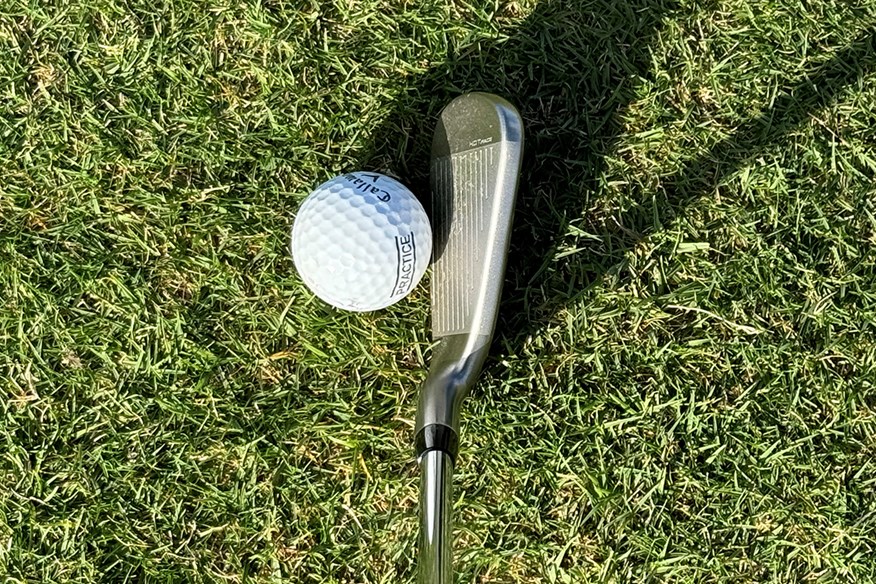
Cobra’s DS-Adapt iron is hot. Like really hot. While it does have the lowest loft of any of our Game Improver irons, when you’re seven yards longer than the next nearest model, we have to look at your performance and technology in some further detail.
While there’s lower launch (third lowest in the category, to be precise), the DS-Adapt actually sits within 100 rpm of the average spin rate, and slightly higher than average peak height and descent angle means this iron is actually playable to match its distance.
We’ll still recommend it for golfers with some more speed or ones generating a little more spin through their own swing at least. It’s a serious contender in the GI irons list.
What our tester says:
The gunmetal-style finish looks pretty different from anything else I’ve seen on the market. I’m not sure if it suits me, but I definitely prefer it over a completely black head. I do know it feels ridiculously fast though. I could almost use this 7-iron off the tee at my speed.
Data:
Loft 27º | Clubhead Speed 94.2 MPH | Ball Speed 129.5 MPH | Carry 194.3 Yards | Spin 4,667 RPM | Launch 15.6º | Height 33.5Yards | Descent Angle 46.2º | L-R Dispersion 4.0 Yards
Read our review of the Cobra DS-Adapt irons here
Pros
- Serious speed
Cons
- Gunmetal finish may divide opinion
| Set Options | 4-PW, GW, SW |
| Stock Shaft | KBS Tour Lite / KBS PGI |
| Stock Grip | Lamkin Crossline |
| Left Handed | Yes |
The Ai300 irons are a 2024 release to add on to the existing Apex line-up. Although more of a game-enjoyment iron than game-improvment, they performed very well in our testing. A forged cavity-back club head design combined with a forged 455 club face creates a Tour-level sound and feel, as well as delivering outstanding power across the club face.
The data was all very acceptable across the board, with nothing standing out to our team. That being said, the feel and feedback form our test really caught our eye.
What our tester says:
The feel from this rather chunky iron took my by surprise. It has the aesthetical qualities of a game-improvement iron, but feels like a tour-ready product, which I don't expect from something so large.
Read our Full Review of the Callaway Apex Ai300 Irons
Data
Loft 29º | Clubhead Speed 88.7 MPH | Ball Speed 121.4 MPH | Carry 180.8 Yards | Spin 4,671 RPM | Launch 17.1º | Height 31.2 Yards | Descent Angle 45.1º | L-R Dispersion 13.2 Yards
Pros
- Great feel
- Head options for different golfers needs
- A set to progress with
Cons
- Nothing spectacular from data
| Lofts Available | 4-LW RH&LH |
| Stock Shafts | True Temper |
| Stock Grip | Golf Pride |
Best Game Improvement Irons: The Test Results
| Make | Model | Loft (º) | Club Speed (mph) | Ball Speed (mph) | Carry Distance (yds) | Spin Rate (rpm) | Launch Angle (º) | Peak Height (yds) | Descent Angle (º) | L-R Dispersion (yds) |
| Ben Hogan | Edge Ex | 32 | 89.5 | 119.1 | 173.0 | 5,357 | 17.1 | 30.4 | 45.5 | 2.4 |
| Callaway | Ai 200 | 30 | 89.3 | 121.5 | 180.0 | 4,843 | 17.4 | 32.0 | 45.6 | 9.9 |
| Callaway | Ai 300 | 29 | 88.7 | 121.4 | 180.8 | 4,671 | 17.1 | 31.2 | 45.1 | 13.0 |
| Callaway | Elyte | 29 | 90.4 | 121.6 | 181.5 | 4,603 | 16.7 | 30.7 | 44.6 | 9.9 |
| Callaway | Elyte X | 28 | 90.8 | 124.2 | 187.9 | 4,362 | 16.1 | 30.7 | 44.0 | 7.4 |
| Cleveland | Zipcore XL | 29 | 92.6 | 125.7 | 187.4 | 4,877 | 18.8 | 37.4 | 48.3 | 8.6 |
| Cobra | DS Adapt | 27 | 94.2 | 129.5 | 194.3 | 4,667 | 15.6 | 33.5 | 46.2 | 4.0 |
| Eleven | 7i | 31 | 90.7 | 120.0 | 168.5 | 6,811 | 16.6 | 30.8 | 46.5 | 14.6 |
| Mizuno | JPX 925 Hot Metal | 28 | 89.2 | 122.0 | 182.0 | 4,691 | 17.7 | 32.8 | 46.0 | 10.4 |
| Mizuno | JPX 925 Hot Metal Pro | 28 | 89.4 | 121.0 | 183.4 | 4,167 | 17.5 | 31.3 | 44.5 | 7.7 |
| Ping | G440 | 29 | 91.1 | 123.5 | 184.4 | 4,749 | 17.9 | 34.0 | 46.7 | 17.0 |
| Ping | G730 | 28 | 90.8 | 123.3 | 186.9 | 4,244 | 16.9 | 31.5 | 45.1 | 25.4 |
| ProtoConcept | C07 PC | 31 | 92.6 | 124.1 | 181.3 | 5,239 | 16.9 | 33.1 | 47.2 | 9.8 |
| PXG | GEN7 XP | 27 | 89.3 | 120.2 | 181.7 | 4,132 | 17.2 | 29.9 | 43.6 | 15.9 |
| PXG | Black Ops | 28 | 90.0 | 121.6 | 185.4 | 4,147 | 17.0 | 30.5 | 43.4 | 4.3 |
| Srixon | ZXi4 | 28.5 | 91.3 | 124.0 | 186.7 | 4,521 | 17.4 | 33.4 | 45.7 | 6.1 |
| Takomo | 101 | 30 | 92.1 | 123.6 | 183.3 | 4,713 | 16.8 | 32.2 | 46.5 | 5.2 |
| TaylorMade | Qi | 28 | 94.6 | 129.1 | 187.0 | 5,745 | 15.3 | 33.6 | 47.4 | 4.7 |
| Titleist | T350 | 29 | 89.1 | 122.1 | 184.7 | 4,299 | 18.0 | 32.9 | 45.6 | 31.1 |
| Wilson | Dynapower | 28 | 90.9 | 126.4 | 193.1 | 4,165 | 15.1 | 29.9 | 43.3 | 22.5 |
| Category | Average | N/A | 90.8 | 123.2 | 183.7 | 4,750 | 17.0 | 32.1 | 45.5 | 11.5 |
| Test | Average | N/A | 90.2 | 120.2 | 175.1 | 5,327 | 17.6 | 31.9 | 46.4 | 9.7 |
Best Game Improvement Irons 2025: Buying Guide
Type of Construction
Golf iron construction typically falls into two categories, one-piece and multi-material.
One-piece means exactly what it says: the irons are built from a single piece of metal squeezed and cut into shape. This kind of iron is made from softer metal that goes through a forging process where a giant hydraulic press hammers super-hot steel into a tooling, or Mold, to create the shape of a club.
You’ll hear the word ‘Forged’ a lot with some irons, but it just refers to models that have been created, or partially created, using this method, it doesn’t necessarily reflect the quality of the iron although softer metals (commonly 1020/1025/8620 carbon steel) are used to make the process easier. Think about Player’s Cavity irons and Musclebacks, like Mizuno’s Pro 241 irons, as good examples; you can actually watch Mizuno’s process here if you’re interested in seeing how irons are made from beginning to end. Find out the best forged irons here.
The second kind of construction is called multi-material. Irons made using this method can be made from forged or cast metal (cast metal is liquified and poured into a Mold instead of being compressed into shape) as well as, increasingly so these days, unique non-metal elements, like PXG’s TPU QuantumCOR or TaylorMade’s SpeedFoam Air. These irons are trying to combine performance elements with feedback, but that’s not to say they can’t feel as good as one-piece – it’s just a change of focus.
Handicap / Skill
We don’t like using handicap as a gauge for which irons you use, but your consistency as a ball striker should be a big factor in the irons you’d select. Typically, skill and strokes-received come as a pair, but it isn’t always the case.
There are good iron players with 14-handicaps (who might not be strong with their driving, hence the higher handicap) and there are inconsistent iron strikers playing off a five or six-handicap who make up for it with excellent short games. You may want to look at the best players’ distance irons if you think you are of a higher skill.
If you want an easy way to figure out the quality of your ball striking, put some footspray (or similar) onto your 6-iron and hit 10 shots.
Are the marks so consistent that it looks like you’ve only hit one ball? You’re in less need of irons with forgiveness.
Loft
One of, if not, the most hotly debated topics in golf equipment. Lofts have undoubtedly gotten stronger over the years (a Pitching Wedge used to be 50º, it’s now down to 41º in some models) but it shouldn’t be as much of an issue as many claim it to be.
The loft you need will be determined by two factors, both of which can be you can be guided through by a good club fitter.
The first is Clubhead Speed (or swing speed): the higher the power you can generate, the less you need to rely on launch and loft to elevate the ball, as the ball speed will allow it to reach a better apex height. Slower speeds can require more help to reach a good trajectory.
The second is Dynamic Loft: this one is about how you’re delivering the club at impact. If you’re creating too much loft when hitting the ball, you might lose out on distance from your optimum – strong-lofted irons will help here. Too little loft at impact, and you might lose out on stopping power into greens, or with carry distance again.
Custom Fitting
Custom fitted golf clubs are still considered by many to be a privilege, but we’d say it’s now an essential. With so many manufacturers making great quality products now, the small differences are going to be the determining factor in what suits you best.
A good club fitter will be able to talk you through the right loft, lie, shaft, bounce, sole width, offset, grip, and any other factor you can think of, to find the right setup for your game.
Best Game Improvement irons - FAQ
SUBSCRIBE TO TODAY’S GOLFER: Print and Digital access, discounts and rewards!
